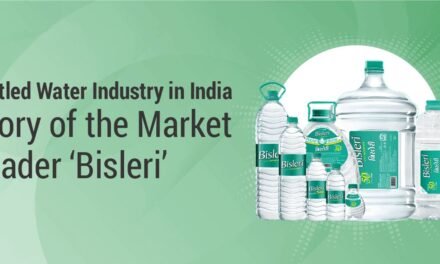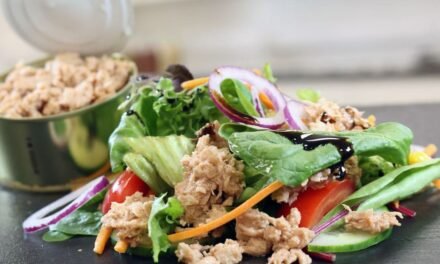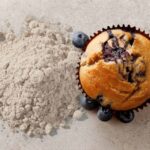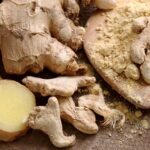Panipuri and Samosa are varieties of traditional Ready to Eat Foods (RTE) Indian Street Foods. The purpose of this study, by S K Saxena and P. Senthilnathan, was to increase the food safety knowledge of traditional Indian RTE foods.
Table of Contents
India is renowned for its diverse and vibrant street food culture. Among the numerous street food options, Samosa and Panipuri (also known as Golgappa) are two of the most popular choices, particularly as late-evening snacks. These foods not only reflect the rich culinary heritage of North India but also cater to the modern urban lifestyle where eating out has become a regular habit due to increased buying power and long working hours.
Samosa: A quintessential North Indian snack, Samosa consists of a triangular crispy, fried pastry shell filled with a spicy mixture of potatoes, peas, and spices. Its popularity stems from its satisfying taste and convenient, ready-to-eat nature.
Panipuri/Golgappa: Another beloved street food, Panipuri consists of small, hollow puris filled with a tangy and spicy mixture of tamarind water, chickpeas, potatoes, and onions. This dish is cherished for its burst of flavors and refreshing quality.
Rise in Street Food Consumption
As urban areas like Delhi, Mumbai, Bangalore, and Kolkata have grown, so has the trend of eating out. This shift is driven by factors such as:
- Increased Per Capita Income: With more disposable income, people are more inclined to spend on dining out.
- Busy Lifestyles: Long work hours and social commitments make ready-to-eat foods a convenient choice.
- Social and Cultural Trends: Street food is not just about nourishment but also about social interaction and experiencing traditional flavors.
The Purpose of this Study
The purpose of this study is to increase the food safety knowledge of RTE foods. Center for Analysis, Research and Training (CART), Delhi conducted a study of Peroxide value of Samosa and Microbiological quality of Panipuri or golgappa sold in Delhi. These dishes are considered to be popular North Indian late evening dishes. With vast changes in the social and cultural milieu, eating out is here to stay in a way increase in buying power and long hours spent away from home make eating out a necessary part of people’s daily life. With per capita income rising, most families in Delhi, Mumbai, Bangalore and Kolkata prefer eating out.
Consumption of Samosa leads to the formation of acidity and gas is not uncommon. Similarly, consumption of panipuri or golgappa leads to stomach upset, sometimes dysentery, bloody diarrhea & vomiting etc due to the presence of pathogenic organisms like E.coli and other coliform group of organisms. E.coli is a germ that causes severe cramps and diarrhea. E.coli have been implicated as agents of the diarrheal disease since the 1920s. The symptoms are worse in children and older people, and especially in people who are already suffering from other illnesses.
Preparation of Panipuri or Golgappa
Mint and coriander leaves are ground into a paste. Panipuri masala is mixed in cold water. Mint and coriander paste and the ice cubes are added.
(Pani Puri masala-Mix 1/4 tsp chilli powder, 1 tsp cumin powder, 1 tsp kala namak, 1 tbsp tamarind pulp & a pinch of salt). Gol gappa is prepared by Wheat floor / Sooji mixed with water, thin small round shaped puri made and deep fried in hot oil to puff until it becomes gentle brown. Chickpeas are washed and soaked overnight. The next day it is boiled in a pan or pressure cook with water and salt, until soft. It is drained and kept aside. Salt and chilli powder is added to the potatoes and mixed in the chickpeas and the bean sprouts, if using. One, then, makes a hole on one side in each gol gappa, and fill it with a teaspoon of the potato mixture. It is topped with a little mint and tamarind chutney. To eat, each gol gappa is dipped into the prepared water and served.
Preparation of Samosa
Stuffing: Onion & tomato are fried in oil in a pan. Turmeric powder, Chilli powder, coriander powder are added and later fried for a little while then boiled and partially smashed potato is added and mixed well. Then it is fried for a few minutes.
Maida is mixed with water to get tight dough to prepare thin, round slice. Then it is folded to cone shape & the stuffing is filled in the cone. The bottom is closed and sealed by moistening and pressing the edges. Samosas are deep-fried in hot oil for few minutes to half boil and then removed; when customers place an order, the half-boiled Samosa once again is deep-fried in hot oil until the gentle brown color is obtained.
Food Safety Hazard Analysis
The high peroxide value found in Samosa is due to frying it in repeatedly heated/used oil and prolonged exposure of oil in air leads to oxidation.
The occurrence of Coliform and E.coli were analyzed in Panipuri. The puri is deep-fried in hot oil; Potato pieces & Chenna were boiled, so they are safe. The source of Coliform and E.coli is possibly, while preparing the red chutney and green water and serving food by direct bare hand. The “panipuri” from India is a unique “hand to hand” method of serving in which the vendor presses the puffed puri with the thumb to make a hole and dips it into a vessel containing masala pani, handing it over to the customer and repeating the process several times
The other possible route is water being used in preparing green water. Another reason was found, in order to serve it chilled, the vendors add ice cubes to the green water which is prepared from unhygienic water, sold in roadside, transported through bicycle, rickshaw / open tri-wheelers and is covered by dirty gunny bags (Jute bags). The ingredients in green chutney are fresh Mint leaf, coriander leaf etc. This is also one of the possible route of contamination; in the field, to get better yield, farmers add natural manure like cow dung etc. to these crop, improper washing of leaf before using it in food leads to contamination.
A recent out break of E.coli was occurred in Los Angeles. The spinach, grown in California, could have been contaminated in the field or during processing, according to the federal Disease Control and Prevention. A total of 94 cases were reported by the state as of 16th September 2006. About 74 % of the fresh market Spinach grown in the US comes from California Farm Bureau Federation.
There has been previous bacterial contamination out breaks linked to spinach and lettuce grown in the state. Wisconsin accounted 32 illnesses, about one third of the cases, including one death. CDC warned that boiling contaminated spinach can kill the bacteria but washing won’t eliminate it. (Hindustan Times daily Newspaper)6.
Sample Collection
A total of 92 samples were randomly selected for the study from different socio-economic class shops. Technically competent analysts at CART, Delhi, analyzed all the samples. The Samosa and Panipuri samples were collected from high socio economic restaurants, Medium socio economic shops and Low socio economic stalls, roadside shops on wheels located in West Delhi, Central Delhi and South Delhi.
These samples were collected as these were being sold to consumer (get it packed by the vendor) and were immediately brought to the laboratory in a thermo cool container. All aseptic precautions were taken during preparation, processing and biological examination of each sample.
The samples were collected from Bikanerwala sweets (west Punjabi bagh), Haldiram’s (Lajpat nagar), Rameswaram foods (South Extension), Bengali sweets (Lajpat nagar), Coffee Day Xpress outlet, Roadside shops in Ajmal Khan Road (Karol Bagh), shops on wheels around New Delhi railway station & Connuaght Place, Aggarwal Sweets, Peera ghari (West Delhi), small road side shops in Nangloi (West Delhi).
List of Shops from where the samples were collected:
West Delhi: Deep Sweets, Agarwal Sweets, Anand Sweets, Roshan Sweets, Vimmal Sweets at Nangloi Market; Bhaarat Sweets, Sudarshan Sweets, Jai Narayan Sweets, Bikaneer Sweets, Deep Sweets, Ramsarup Sweets & Snacks, Shayam Sweets, Prem Sweets and some shops on wheels at Kirari Road; Bikanerwala Sweets at west Punjabi Bagh.
Central Delhi: Aggarwal Restaurant, Special Chola Bhatura, Bajrang Sweet Corner, Saraswati Sweet Corner, Special Lassi Bhandar, Rakhi Sweets Bhandar, Ankit Tea Stall, Bikanerwala Sweets at Connaught Circus; Bikanerwala Sweets & snacks, Jai Matha Tea Corner, Gupta Tea Stall, Chotu Chola Batora, Jagdamba Sweets Corner at Pagarganj, New Delhi Railway Station; Bikaner Sweet Corner, Bikanerwala Sweets, Amit Snacks, Deepak Sweets, Chola Batora and some shops on wheels at Ajal Khan Road, Karol Bagh.
South Delhi: Haldiram’s Lajpat Nagar, Tiwari Sweets, Aggarwal Sweets, Bengali Sweets, Muraliwala Sweets, Sai Sweets and some shops on wheels at Lajpat Nagar; Bengali Sweets, Rameswaram Foods at South Ex Market; Gupta Snacks, Varun Sweets, Twin Sweets and some shops on wheels at Sarojini Nagar Market.
Preparation of Sample
Panipuri: Two number of puri were taken and hole is made on the top, approximately half tea spoon of red chutney was added to both, 2-4 potato/chenna piece was placed inside and filled with green water as being served to the customer and then they were crushed & 10 g of thus prepared sample mixed with 90 ml sterile normal saline to get 10-1 dilution, this solution further serially diluted up to required dilutions as in IS: 10232:20037.
Samosa: The Samosa samples were crushed in a mixer, thus crushed samples were placed in a 90 mm petri-plate and placed in an oven previously heated to 80 ± 2OC for 2 hours for drying. From the dried sample oil was extracted by using Petroleum Benzene (boiling range 40 to 60 OC).
Analysis of Samples for Food Safety
Bacterial Count in Panipuri: Panipuri samples were examined to estimate Total Plate Count (TPC), Coliform Count (CC) & Escherichia coli Count (ECC) as per standard methods prescribed by the IS: 5402: 20028, IS: 5401(Part-1): 20029 & IS: 5887 (Part-1): 200010 respectively. TPC was estimated using Plate Count Agar (Himedia, code-M 091).
While characteristic colonies of Coliform on Violet Red Bile Agar (Himedia, code-M 049S) were purplish red with diameter at least 0.5 mm, surrounded by a reddish zone of bile precipitate and E.coli colonies on Eosine Methylene Blue (EMB) (Himedia, code-M 022) appeared as a dark center giving a distinct indelible-ink, greenish black metallic sheen on deflected light (Deepa Jolly and E. Nanu11).
The bacterial counts per gram of sample were estimated by multiplying the mean cfu count of the sample in duplicate plates with the dilution factor and expressed as log10 cfu/g of sample.
Peroxide Value in Samosa: The test method prescribed in IS: 15271: 200312 was adopted for the determination of Peroxide Value in extracted fat sample.
Results
Panipuri: Total Plate Count: 100 % samples were found bacteriologically unfit for consumption, as 25% high socio economic class shops samples show TPC 5 log10 cfu/g, 50% samples shows 6 log10 cfu/g & 25% samples show 7 log10 cfu/g. 11.11% Medium socio economic class shops samples show 6 log10 cfu/g, 88.88 % show 7 log10 cfu/g. 4.16 % Low socio economic class shops samples show log10 cfu/g, 12.5 % samples show 7 log10 cfu/g and 83.33 % show 8 log10 cfu/g.
Coliform count: Coliform count was found in 97.29 % of samples which indicates unfit for consumption, as 75% High socio economic class shops samples show CC 3-4 log10 cfu/g. 22.22% Medium socio economic class shops samples show 4 log10 cfu/g, 33.33 % show 5 log10 cfu/g, 22.22% show 6 log10 cfu/g and 22.22 % show 7 log10 cfu/g. 8.33 % Low socio economic class shops samples show 3 log10 cfu/g, 16.66 % samples show 4 log10 cfu/g, 25.00 % show 5 log10 cfu/g, 16.66% show 6 log10 cfu/g, 16.66 % show 7 log10 cfu/g, and 16.66% show 8 log10 cfu/g.
Escherichia coli: Escherichia coli found in 97.29 % samples which indicates unfit for consumption, as 75% High socio economic class shops samples show ECC 1-3 log10 cfu/g. 33.33% Medium socio economic class shops samples show 1-2 log10 cfu/g, 44.44% show 3 log10 cfu/g and 11.11% show 4 log10 cfu/g. 16.66 % Low socioeconomic class shops samples show 2 log10 cfu/g, 29.16 % samples show 3 log10 cfu/g, 20.83 % show 4 log10 cfu/g, 20.83% show 5 log10 cfu/g and 4.16 % show 7 log10 cfu/g.
Samosa: The specification for Bureau of Indian Standards determines the PV is Max 10 mille equivalents per kg of fat. Majority of the samples tested shows unacceptable PV. 76.92 % samples shows peroxide values > 10 mille equivalents per kg of fat. 50 % High socio-economic class shops & restaurants offering Samosa containing < 10 PV mille equivalents per kg of fat; the rest 50 % offers Samosa containing > 10 PV. 37.71 % Medium socio economic class shops offering Samosa of < 10 PV & 64.28 % shops offering Samosa containing higher PV than the standard level. In the case of Low socioeconomic class shops only 5.26 % shops Samosa comply with the requirements of BIS; wherein the rest 94.73 % shops Samosa does not comply with the BIS specifications.
Conclusion
It is concluded that the quality of food samples such, as Panipuri and Samosa from all the outlets/shops under study were not safe for consumption. There is a need to educate the manufacturers to maintain the hygienic standards. It is also felt that such samples must be analyzed frequently at designated & accredited food testing laboratories to evaluate their quality and safety. Understanding and addressing these issues is crucial for ensuring that these beloved snacks remain safe for consumption amidst the growing trend of eating out in urban India.
It is hoped that by addressing these concerns through better practices and raising awareness about food safety, the quality and safety of these traditional street foods can be significantly improved.
References for Further Reading
- Friedman, M. (2007). “Food safety and the risk of foodborne illnesses.” Food Quality and Safety.
- Poola Bajaj, Pulkit Mathur and Sushma Sharma. Safety of Street Foods: Case Study of A Food Plaza in Delhi.
- Indian Food Industry, May-June 2002, Vol. 21, No.3. P39-42.
- Lior H. Classification of Escherichia coli. In: Gyles CL, editor. Escherichia coli in domestic animals and humans. Wallingford, United Kingdom: CAB International 1996:31-72.
- http://bmj.bmjjournals.com/cgi/content/full/322/7287/681/a
- http://www.newkerala.com/news4.php?action=fullnews&id=19672
- http://bmj.bmjjournals. com/cgi/content/full/322/7287/681/a
- IS: 10232: 2003 General rules for the preparation of initial suspensions and decimal dilutions for Microbiological examination of foods. Bureau of Indian Standards, New Delhi.
- IS: 5402: 2002 General guidance for the enumeration of Microorganisms Colony count technique- at 30OC. Bureau of Indian Standards, New Delhi.
- IS: 5401(Part-1): 2002 General guidance for the enumeration of Coliform – Colony count technique. Bureau of Indian Standards, New Delhi.
- IS: 5887 (Part-1): 2000 Methods for detection of bacteria responsible for food poisoning- Isolation, Identification and Enumeration of Escherichia coli. Bureau of Indian Standards, New Delhi.
- Deepa Jolly and E. Nanu Hygenic quality of retail market beef in and around Thrissur. J Food Sci Technol 40: 498-501.
- IS: 15271: 2003 Namkeen-Specification. Bureau of Indian Standards, New Delhi.

















